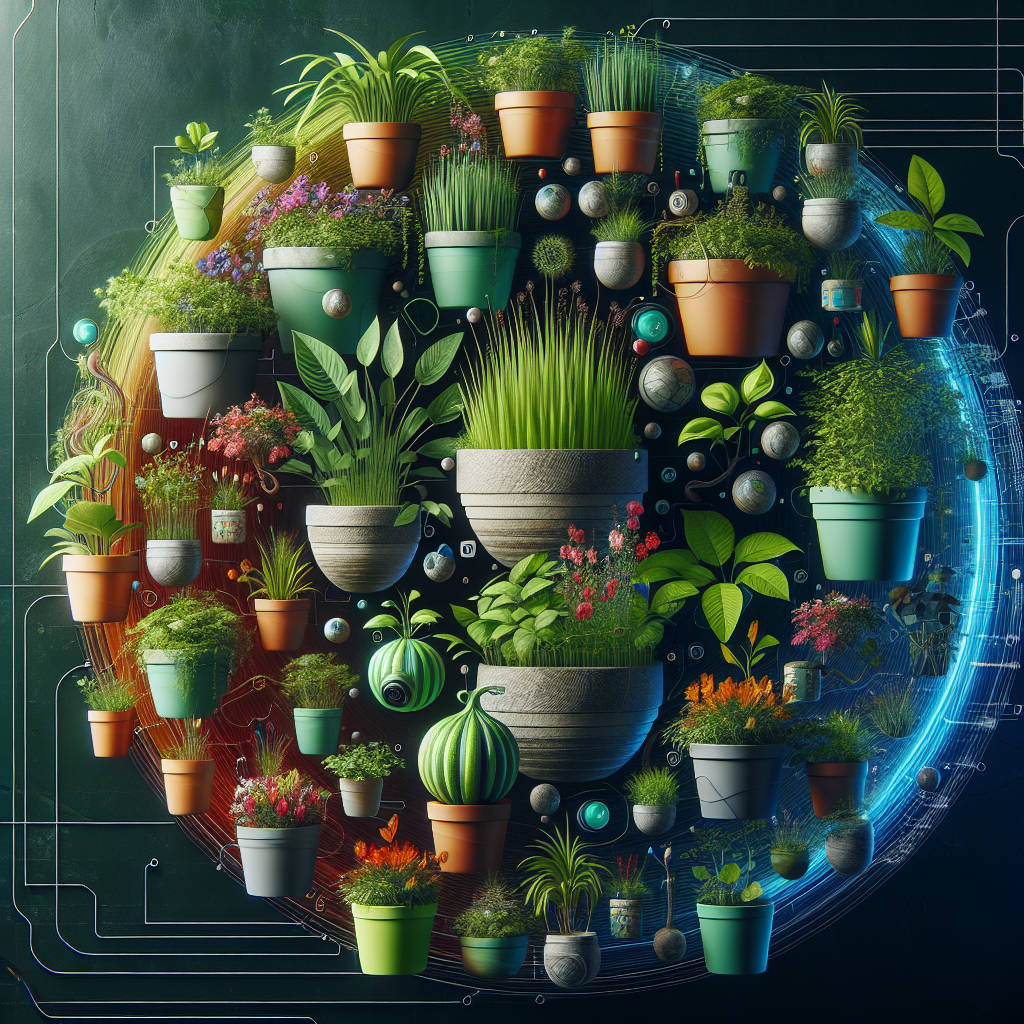Overview of Home Gardening Flower Pot Planter
Home gardening enthusiasts often turn to flower pot planters to cultivate plants in limited spaces or enhance interior spaces with greenery. Flower pot planters come in a variety of materials, shapes, and sizes, each influencing the health and growth of plants. Choosing the right flower pot planter is crucial for plant health and overall aesthetic appeal.
Importance of Choosing the Right Flower Pot Planter
Selecting the appropriate flower pot planter is essential for the well-being of plants. According to The Royal Horticultural Society, 'The growing medium available to plants in a pot is limited, making it important to choose a container that suits the needs of the plant.' Different plant species have varying requirements for root space, water drainage, and insulation, all of which are influenced by the type of flower pot planter used.
Types of Flower Pot Materials
Terra Cotta
Terra cotta pots are porous, allowing for good airflow to plant roots and absorbing excess moisture. However, they can dry out quickly and may require more frequent watering.
Plastic
Plastic pots are lightweight and retain moisture well. They are durable and come in various colors and shapes. However, they do not provide good aeration to plant roots.
Ceramic
Ceramic pots are excellent for aesthetic appeal and come in a wide range of designs. They are heavier than plastic pots and may be prone to cracking in extreme temperatures.
Wood
Wooden pots offer a natural look and good insulation for plant roots. They are often used for larger plants but may deteriorate over time due to moisture exposure.
Metal
Metal pots are durable and can add a modern touch to indoor spaces. However, they may heat up quickly in sunlight, affecting plant roots.
Concrete
Concrete pots are sturdy and provide stability for larger plants. They are suitable for outdoor use but may be heavy and challenging to move.
Factors to Consider When Choosing a Flower Pot Planter
Size and Shape
Dr. Botanist, a Plant Scientist, emphasizes, 'Choosing the right size of the pot is crucial for the health of the plant as it affects root growth and water retention.' Ensure the pot accommodates the plant's growth potential and provides ample space for root development.
Drainage
Proper drainage is essential to prevent waterlogging, which can lead to root rot. Look for pots with drainage holes or consider adding a layer of gravel at the bottom to improve drainage.
Insulation
Different materials provide varying levels of insulation for plant roots. Consider the climate and indoor conditions to select a pot that maintains stable root temperature.
Durability
Evaluate the longevity of the pot material, especially for outdoor use where exposure to elements can impact its lifespan. Choose a durable material that withstands weather conditions.
Aesthetic Appeal
Incorporate the visual aspect by selecting a pot that complements the plant and the surrounding environment. Choose a design and color that enhances the overall look of the space.
Best Practices for Planting in Flower Pot Planters
Soil Selection
Use a well-draining, nutrient-rich potting mix suitable for the plant species. Avoid compacted soils that hinder root growth and drainage.
Proper Plant Selection
Match the plant's water and light requirements with the pot location. Consider the mature size of the plant and ensure it fits the chosen pot.
Watering Techniques
Water plants thoroughly but allow the soil to dry slightly between watering to prevent waterlogged conditions. Adjust watering frequency based on plant needs and environmental conditions.
Fertilization
Follow recommended fertilization schedules using appropriate fertilizers for container plants. Avoid over-fertilizing, which can harm plant roots.
Pruning and Maintenance
Regularly prune dead or overgrown parts of the plant and inspect for pests or diseases. Maintain the pot by cleaning it periodically and checking for any damage.
Case Studies and Examples
Successful Flower Pot Planter Combinations
A study conducted by Garden Design Magazine showcased various successful flower pot combinations featuring different plant species and pot materials. The combinations ranged from traditional to modern styles, demonstrating the versatility of flower pot planters in enhancing outdoor and indoor spaces.
Before and After Transformations Using Flower Pot Planters
Several gardening enthusiasts shared their before and after transformations using flower pot planters on social media platforms. These transformations highlighted the impact of well-chosen flower pot planters in refreshing outdoor patios, balconies, and interior settings, inspiring others to explore creative planting options.
Expert Insights
'Choosing the right size of the pot is crucial for the health of the plant as it affects root growth and water retention.' - Dr. Botanist, Plant Scientist
Dr. Botanist emphasizes the importance of selecting an appropriate pot size to support healthy root development and optimize water retention for plant growth.
Implications of Using Flower Pot Planters
Benefits of Using Flower Pot Planters for Limited Spaces
Flower pot planters enable individuals with limited outdoor space to create green areas for gardening. They provide flexibility in plant arrangement and can be easily moved to optimize sunlight exposure, making them ideal for urban dwellers and apartment residents.
Impact of Flower Pot Planters on Indoor Air Quality
Research published in the Journal of Environmental Horticulture indicates that indoor plants, including those in flower pot planters, contribute to improved indoor air quality by removing pollutants and increasing oxygen levels. The presence of plants indoors has been associated with enhanced well-being and productivity.
Conclusion
In conclusion, choosing the right flower pot planter is crucial for plant health and aesthetics. By considering factors such as size, drainage, insulation, durability, and aesthetic appeal, individuals can optimize plant growth and create visually appealing green spaces. Implementing best practices for planting in flower pot planters and seeking expert insights further enhances the gardening experience.
Call to Action
For specific plant needs and expert advice on advanced flower pot planter techniques, seek professional guidance from horticulturists or botanists. Additionally, further research on plant care and innovative flower pot planter designs can expand your knowledge and creativity in gardening practices.
Topics




